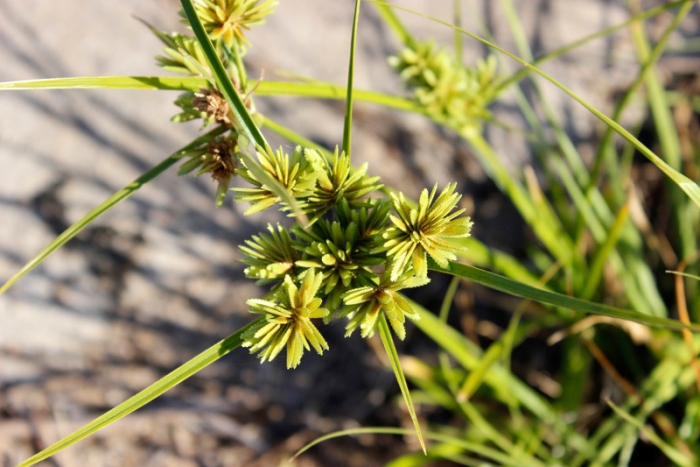Giant Sedge
(Cyperus giganteus)
Giant Sedge (Cyperus giganteus)
/
/

© J. Simón Tagtachian
CC BY-SA 4.0
Image By:
© J. Simón Tagtachian
Recorded By:
Copyright:
CC BY-SA 4.0
Copyright Notice:
Photo by: © J. Simón Tagtachian | License Type: CC BY-SA 4.0 | License URL: http://creativecommons.org/licenses/by-sa/4.0/ | Uploader: simontagtachian | Publisher: iNaturalist |













Estimated Native Range
Summary
Cyperus giganteus, commonly known as Giant Sedge or piripiri, is a perennial herbaceous plant of the genus Cyperus. It is native to a variety of wetland habitats, including marshes, swamps, and along riverbanks from Jalisco in west-central Mexico to Uruguay and throughout the Caribbean islands such as Cuba, Hispaniola, Puerto Rico, Jamaica, and Trinidad. It is also sparingly naturalized in eastern Texas and southern Louisiana. Giant Sedge can grow up to 5-9 feet (1.5-2.7 meters) tall, with a clumping habit that forms dense stands. The plant features triangular stems topped with umbrella-like clusters of narrow, grass-like leaves and small, greenish-brown flowers that bloom in summer. The flowers are not particularly showy, but the overall form of the plant provides a striking vertical accent in the landscape.
Giant Sedge is valued for its ability to thrive in wet conditions and is often used for erosion control and habitat restoration in its native range. It is suitable for water gardens, rain gardens, and naturalized areas where it can be allowed to spread. This species prefers full sun to part shade and requires consistently moist to wet soil conditions. While it is not prone to serious pest or disease problems, it can become invasive in areas outside its native range if conditions are favorable. Gardeners should be cautious about planting it in areas where it could spread into natural waterways.CC BY-SA 4.0
Giant Sedge is valued for its ability to thrive in wet conditions and is often used for erosion control and habitat restoration in its native range. It is suitable for water gardens, rain gardens, and naturalized areas where it can be allowed to spread. This species prefers full sun to part shade and requires consistently moist to wet soil conditions. While it is not prone to serious pest or disease problems, it can become invasive in areas outside its native range if conditions are favorable. Gardeners should be cautious about planting it in areas where it could spread into natural waterways.CC BY-SA 4.0
Plant Description
- Plant Type: Grass
- Height: 5-15 feet
- Width: 1-2 feet
- Growth Rate: Rapid
- Flower Color: N/A
- Flowering Season: Summer, Fall
- Leaf Retention: Evergreen
Growth Requirements
- Sun: Full Sun
- Water: High, Aquatic
- Drainage: Medium, Slow, Standing
Common Uses
Border Plant, Low Maintenance, Water Garden
Natural Habitat
Native to a variety of wetland habitats including marshes, swamps, and along riverbanks
Other Names
Common Names: Giant Papyrus, Giant Flat Sedge, Giant Umbrella-Sedge
Scientific Names: , Cyperus giganteus, Chlorocyperus giganteus, Cyperus berteroi, Cyperus conspicuus, Cyperus densiflorus, Cyperus densiflorus, Cyperus elatus, Cyperus elegans, Cyperus princeps
GBIF Accepted Name: